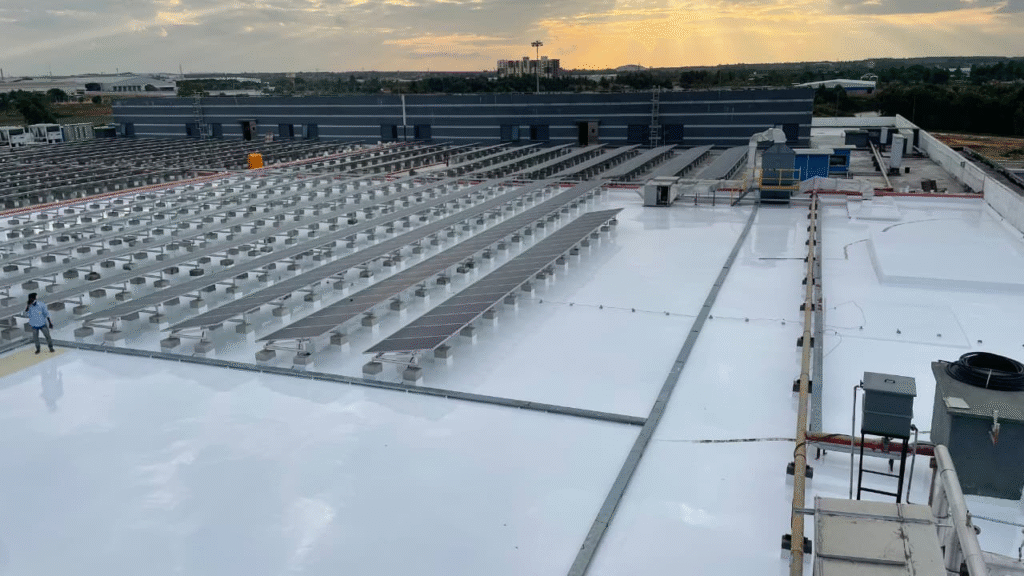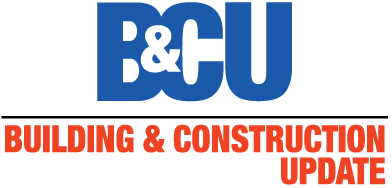Drythane Roof Waterproofing Solutions
Comprehensive Protection, Durability & Sustainability—Optimised for the 2025 Monsoon

Drythane

What makes Drythane different in one line?
A seamless, liquid-applied polyurethane membrane that’s roller-friendly, UV-stable, and tough enough to span movement while bonding so strongly it typically tears the concrete before it lets go.
What minimum/target film thickness do you specify?
Total system DFT: 1.5 mm. (Two coats; details like drains/upstands receive local reinforcement.)
“UV Resistant – High SRI.” What’s the number?
SRI 110 for the white shade of our aliphatic topcoat.
Any accelerated UV data?
Yes—QUV-A [≥2,000 h] with no cracking or chalking and [≥90%] retention of tensile/elongation. Outdoor exposure panels corroborate the lab results.
The poster claims “24×7 water immersion <0.5% long-term saturation water absorption.” How was that measured?
By ASTM D570 on cured films: mass gain remained <0.5% at [7-day and 30-day] immersion. Post-immersion tensile/ elongation stayed within spec.
Can it be flood-tested quickly?
Allow [24–48 h] after the final coat at 25 °C before a flood test; for continuous immersion service, wait [5–7 days] cure.
“8.0 mm crack spanning” sounds high. Is that static or cyclic?
Our system rating is 8.0 mm crack-bridging under [ASTM C1305/C836-referenced] conditions with local rein-forcement at stress points. Internally, the base coat survives ~7 mm and the top coat ~12 mm; we publish 8.0 mm as a conservative system figure.
What temperatures apply to that crack-bridging claim?
Verified at [23 ± 2 °C]. At lower temperatures we recommend reinforcement at critical details; low-temp data available on request.
The poster says “High Adhesion – Adhesi on > tensile strength of concrete.” What pull-off values do you see?
On properly prepared concrete with the correct primer, ASTM D4541 results are typically [2.0–3.5 MPa] with cohesive failure in the concrete.
What surface prep and moisture limits ensure that adhesion?
Prep to CSP 3–4 (grind/shot-blast), concrete moisture ≤[5% by mass] or use our moisture-tolerant primer when readings are higher. Substrate must be clean, sound, and dew-point safe.
“Extremely Tough” — can you unpack the mechanical numbers?
- Hardness: 65 Shore D (ASTM D2240)
- Tensile: 16 MPa (ASTM D412)
- Tear: 54 N/mm top-coat (ASTM D624, Die [C])
- Puncture: 1500 N (internal method aligned to ASTM D4833/EN 12691)

How does Drythane perform under sun + rain cycles?
The aliphatic topcoat is UV-stable and the base retains elasticity; together they keep water out while tolerating daily thermal movement. Long-term outdoor exposure and immersion show no loss of waterproofing.
How do you keep application costs low?
Roller application, no torches or overlaps, and fast detailing around penetrations. Fewer layers and quick recoats reduce labour hours versus torch-applied bitumen or multi-coat cementitious systems.
Where should specifiers use it?
Exposed roofs/terraces, podiums, balconies, wet areas, planters, and tanks. Choose primers to match the substrate and use reinforcement at drains and terminations.
Can damaged areas be repaired?
Yes. Abrade, clean, and overcoat; the new film keys into the old, restoring water-proofing without lifting large areas.
How does Drythane compare to bitumen in a sentence?
No seams, no flames, far better crack-bridging and adhesion—so fewer leak paths and lower lifecycle cost, even if material-only cost is higher.
Drythane
Web : www.drythane.com








